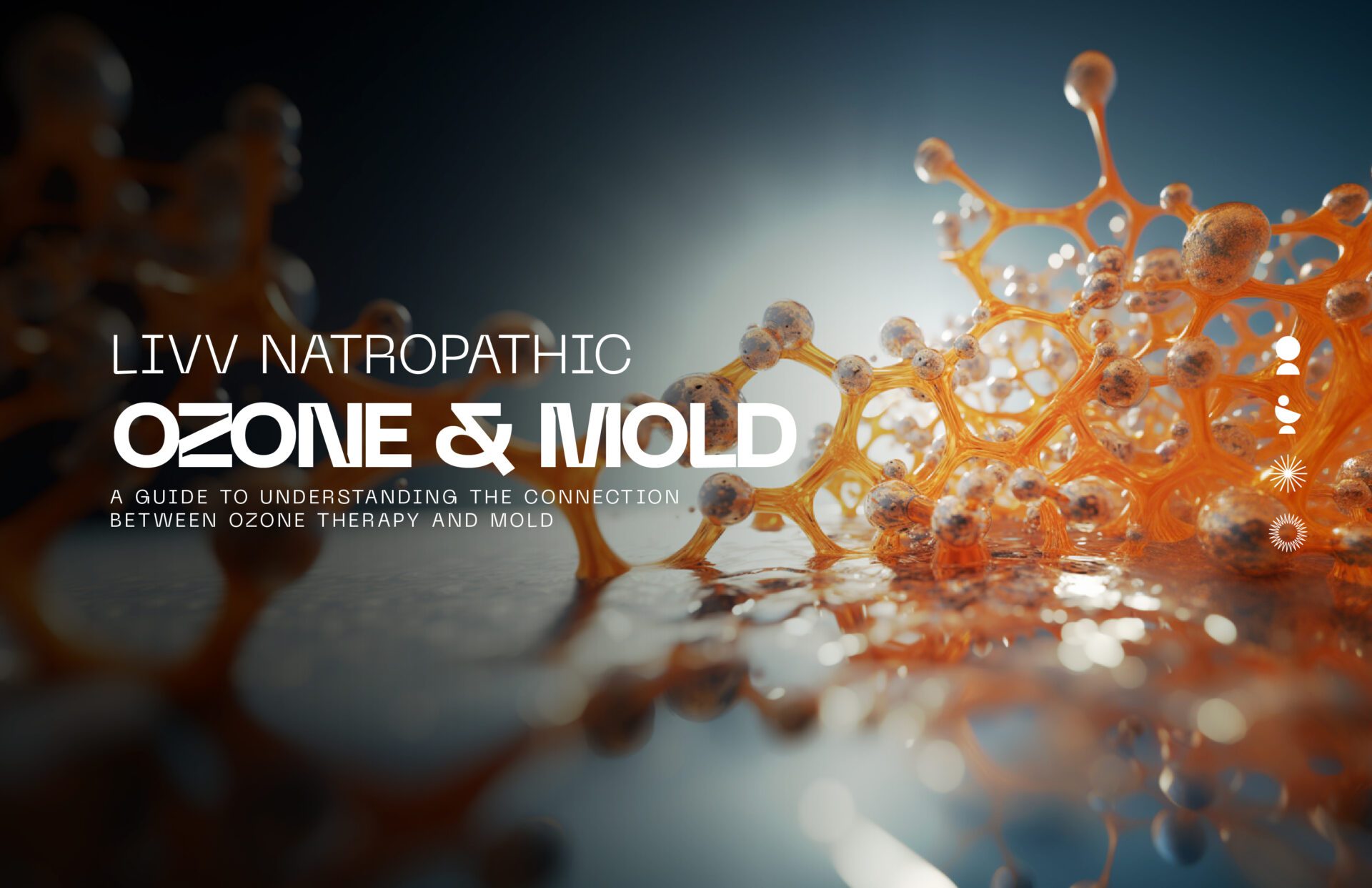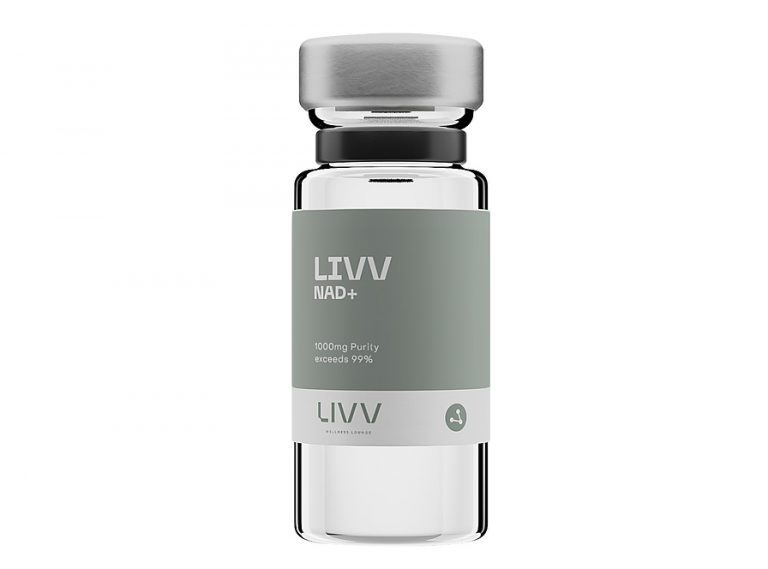Ozone and mold

Contents
What is ozone?
What is mold?
What are mycotoxins?
Where do mycotoxins come from?
What are the symptoms of mycotoxin poisoning?
How can you avoid mycotoxins?
Does ozone kill mold?
How do you detox from mycotoxin exposure?
What is ozone therapy?
The verdict on ozone and mold
Are you aware of the link between ozone and mold? Doctors in the know have used ozone for over 150 years to treat various problems, but how does it work?
We investigate the connection and explain the intricacies of ozone therapy. Read on to learn about the incredible potential it promises.
What is ozone?
Ozone (O₃) is a pale blue or colorless gas occurs naturally in the troposphere and the stratosphere. It consists of three oxygen atoms. Regular breathable oxygen contains two. Ozone is highly reactive, as the third atom can easily detach to form new compounds.
It’s the main component of the ozone layer. The layer traps the sun’s heat and filters radiation, making it essential for life on earth.
Ozone is a highly reactive chemical compound. It has an odor some can sense during electrical storms. Manufacturers use two processes to produce the gas:
- Silent corona discharge passes an electric charge through oxygen or air. These individual atoms then combine with O₂ to form O₃.
- Ultraviolet radiation follows the same principle as natural ozone production in the upper atmosphere. UV light splits O₂ into individual atoms. Experts consider this method less efficient.
Concentrated ozone is extremely unstable, and production is dangerous and difficult. Today, you can use an ozone generator to break apart the oxygen molecules.
These generators could remove dangerous airborne particles like mold and mycotoxins. They’re also used in ozone therapy. Some also claim it deodorizes and disinfects the air in indoor areas.
Ozone is a potent oxidizing agent. A few companies market it commercially as a bleach for organic compounds. Some industries use it as a germicide to sterilize water. Others claim it eliminates pungent flavors and odors.
What is mold?
Molds are natural structures that occur virtually anywhere with moisture and oxygen. They form a broad range of filamentous fungi in a range of colors. These microscopic organisms break down plant and animal matter.
Outside, you usually spot mold in shady and damp areas. It helps to decompose vegetation. Some molds are edible, like those used for cheese production.
Indoor molds grow on basically any surface. They need air, moisture, and organic matter to thrive. If you hassle or disturb them, they can release spores to reproduce. The spores can spread via water, air, and animals.
People generally get exposed to mold in homes, schools, work, and the outdoors. Inhalation is the primary method, but you can also absorb them through the skin. The tiny spores easily get dislodged and become airborne, causing you to breathe them in.
Healthy people are unlikely to encounter any serious issues with most species. The potential for sinus and nasal congestion is high. Other symptoms include a sore throat allied to a chronic cough. Some people also complain of a skin rash, blurred vision, or eye irritation.
People with respiratory disease may have breathing problems after exposure. What can you do, and does ozone kill mold and mildew?

What are mycotoxins?
Mycotoxins are poisonous secondary metabolites that specific fungi make. Certain molds produce the toxic chemical products which readily colonize several food crops.
These toxins can cause disease and death in humans and animals. Scientists use mycotoxins to make various drugs due to their pharmacological actions. These include antibiotics and growth promotants.
Most mycotoxins are stable. Scientists have identified over 300 so far. Below are the most common molds and the toxins they produce.
| Mold species | Mycotoxins |
| Aspergillus | Aflatoxins, gliotoxin, fumagillin, ochratoxin |
| Penicillium | Ochratoxin, patulin, gliotoxin, citrinin, |
| Stachybotrys | Roridin E, satratoxin, trichothecenes |
| Trichoderma | Gliotoxin, T-2 toxin, trichodermin |
The most common mycotoxins that endanger humans are:
- Aflatoxins: Certain mold species produce these poisonous carcinogens and mutagens. Exposure can cause nausea, abdominal pain, vomiting, and convulsions.
- Ochratoxin: This toxin leads to immunosuppression that can impact antibody responses. It diminishes the immune organs (lymph nodes, thymus, spleen). It also affects cytokine production and cell volume.
- Patulin: Chronic symptoms may include genotoxic, immunotoxic, neurotoxic, and immunosuppressive reactions.
- Fumonisins: Intoxication can cause diarrhea and abdominal pain. Chronic exposure displays a link between high levels and esophageal cancer.
- Zearalenone: Pigs showed changes in their reproductive cycle when exposed to minor amounts. Higher levels may cause spontaneous miscarriages, infertility, and birth-defects.
- Nivalenol: This mycotoxin is a product of some Fusarium mold species. It affects several food products, especially cereals and grains. Exposure can cause nausea, abdominal pain, headache, dizziness, and fever.
These toxins gather in maturing crops of corn, sorghum, and cereals. Peanuts are regular carriers. Soya beans, apples, coffee, spices, and dried fruits are prone to mycotoxins. Maize crops are the most susceptible, while rice is at the other end of the spectrum.
The toxins can accumulate in growing plants or form during storage or transport. Consumption of mycotoxin-contaminated products can cause acute or chronic toxicity.
Mycotoxin food-contamination is an ongoing concern. Outbreaks are unpredictable and perhaps even unavoidable.
Where do mycotoxins come from?
Fungi produce mycotoxins naturally and readily contaminate foodstuffs. They grow on various crops, especially during humid and warm conditions.
These molds also appear in buildings with poor ventilation. Water damage, high humidity, or other moisture issues don’t help. Some give off mycotoxins, too. Fungi produce spores that get carried in the air.
The most common molds on foods are Penicillium, Aspergillus, and Fusarium. They all make mycotoxins. The first couple may occur during storage or the drying phase. Fusarium often takes hold at harvest time.
What are the symptoms of mycotoxin poisoning?
Most people understand the potential problems of mold. Fewer understand the impact of these microscopic metabolites. A healthy diet and regular exercise can help quash symptoms. Consistent sleep patterns and effective stress-management help, but it may not be enough.
Some people are genetically predisposed to mycotoxin poisoning. Scientists say 25% of the population has the HLA-DR gene. It produces an immune response that prevents the elimination of mycotoxins.
Mycotoxin poisoning symptoms may include chronic fatigue and autoimmune problems. Some report skin rashes, anxiety, and headaches. A build-up of these poisonous compounds can lead to other issues, too.
Neurological problems
Issues with the brain and mood can manifest in various afflictions, including:
- Adult attention-deficit/hyperactivity disorder (ADHD)
- Insomnia
- Memory loss, cognitive damage, and brain fog
- Anxiety, depression, and mood swings
- Lyme disease symptoms despite a negative test
Autoimmune issues
Mold exposure can cause the following problems:
- Joint pain, muscle weakness, or fibromyalgia
- Fatigue, and in some cases chronic fatigue syndrome
- Autoimmune disease
Respiratory problems
You may encounter these respiratory symptoms:
- Asthma, sinus issues, and allergies
- Breathing problems
- Histamine intolerance, which can include improper temperature regulation, excessive sweating, hives, and palpitations
Digestion problems
Troubles with digestion can cause:
- Food sensitivities
- Leaky gut syndrome
- Recurring candida overgrowth
- Metallic taste in your mouth
Skin issues
Exposure to mold can wreak havoc on your skin:
- Potential for psoriasis, eczema, and other rashes
- Static electrical shocks
How can you avoid mycotoxins?
While they’re natural, there are ways to avoid mycotoxins. Molds grow on various foodstuffs and may penetrate deep below the surface. To minimize your risk, take the following precautions:
- Ensure proper drying and be especially vigilant with storage conditions. It’s vital to fight against these structures.
- Beware of damaged vegetables, as they’re more prone to attacks by mold. They’re also more vulnerable to mycotoxin exposure.
- Don’t keep cereals for extended periods, particularly in humid areas.
- Store your foodstuffs carefully. Ensure your pantry is dry, cool, and insect-free.
- Buy your grains fresh and from trusted sources.
- Maintain a varied diet to provide yourself with the best nutrition. Diverse meat, fruit, and vegetables reduce the potential for mycotoxin contamination.

Does ozone kill mold?
Ozone kills mold and mildew to a certain extent. The gas neutralizes surfaces but can’t penetrate them like mold. It stops the spores from sprouting, but it needs help.
Ozone gas easily breaks down and combines with mold or mycotoxins. It changes their chemical composition to kill the spores and mold cells. It doesn’t remove the mold, so you still need remediation to limit the potential for a comeback.
Ozone and mold act differently. The former can only go where air goes. Mold, by contrast, can penetrate surfaces and hide deep within. Clean or eliminate the moldy areas before introducing the ozone. Ensure you treat the root cause of the moisture first to prevent its return.
How do you detox from mycotoxin exposure?
Mycotoxin poisoning isn’t the same as an allergic reaction to mold. Most molds aren’t toxic and don’t even produce the damaging mycotoxins. Allergies feature traditional hay fever effects. You can expect a runny nose, itchy eyes, sneezing, and congestion.
Some people choose mold binders to attract and connect with mycotoxins. Non-prescription binders, like charcoal and bentonite clay, attach to the toxins. They help them through the gastrointestinal tract.
Change your diet. Avoid foods with mold or yeast, like cheese or alcohol. Ingest gluten-free grains in moderation. Include starch and legumes to balance your diet. Avoid sugar and highly processed foods.
Glutathione is a potent antioxidant comprising three amino acids (glycine, cysteine, glutamic acid). Made in the liver and also available in supplements, it oxidizes toxins and free radicals. Dietary sources include avocado, spinach, okra, and asparagus.
Ensure you detox your home by eliminating the source of moisture. If the conditions are right, the annoying and potentially harmful fungus thrives. You could also consider IV therapies.
What is ozone therapy?
Does ozone kill mold and bacteria? In tests, medical O₃ deactivates fungi, yeast, protozoa, bacteria, and viruses.
Ozone therapy is a safe and effective treatment for a variety of health conditions. Patients use it to treat mold toxicity. Others use it for chronic viral or bacterial infections and Lyme disease. Some manage the effects of autoimmune disease.
Our German 10-pass ozone machine is the international gold standard. The process involves introducing ozone gas into the body for pro-oxidative benefits. The process stimulates oxygenation and anti-oxidative effects. It also boosts the immune response.
We offer IV ozone and ozone insufflation. Our experienced nurses and doctors perform both processes.
Specially trained practitioners offer intravenous therapy for systemic results. The ozone is administered directly into the bloodstream. It can detoxify and oxygenate the blood. Experts believe it can cleanse and energize the entire body.
Insufflation is the introduction of ozone into a body cavity. It produces a more localized effect, something like an internal rinse. Other techniques include ozonated water, ointments, baths, and autohemotherapy.
The verdict on ozone and mold
Combining ozone and mold shows potential for removing or deactivating mycotoxins. Several clinical trials are ongoing to assess how they interact. They show it may improve recovery from disease and even wound healing.
Ozone may stimulate the immune system and help prevent infection. It can also interfere with unhealthy processes, deactivating fungi, bacteria, and viruses. It could treat diabetes, breathing issues, and immune disorders.
Ready to discover the vast benefits of ozone therapy? Schedule a consultation with our experts to discuss your treatment options. LIVV Natural is a medical wellness clinic that focuses on unlocking your optimal health and enabling your best lifestyle.
Author: Dr. Jason Phan NMD – Founder of LIVV Natural – Anti-aging – regenerative medicine – peptide therapy
